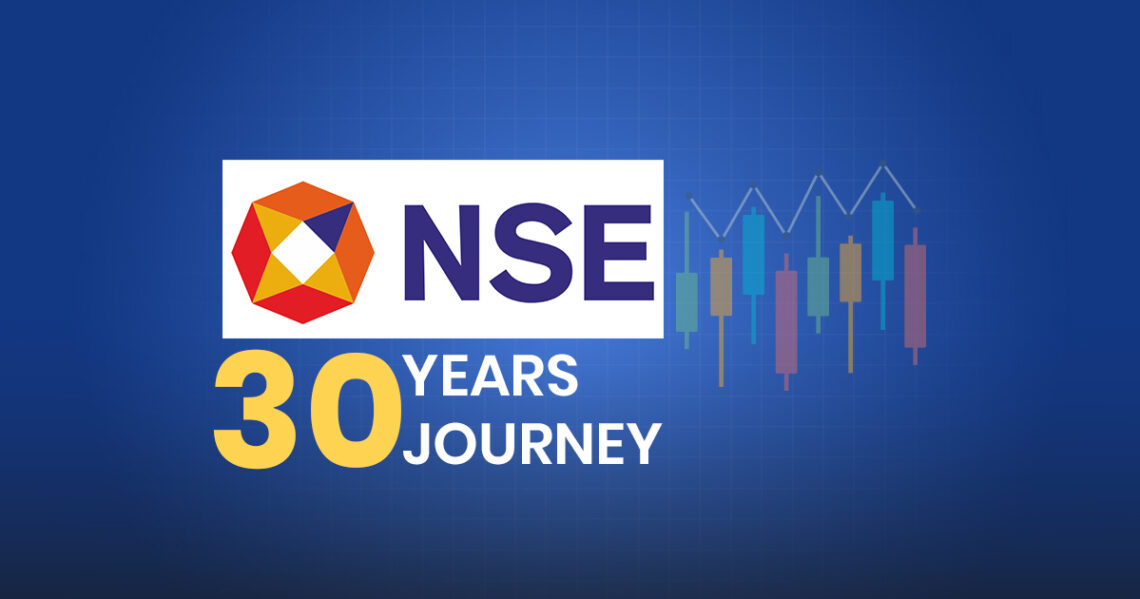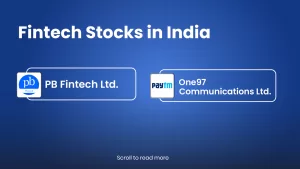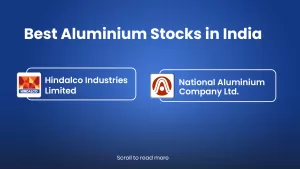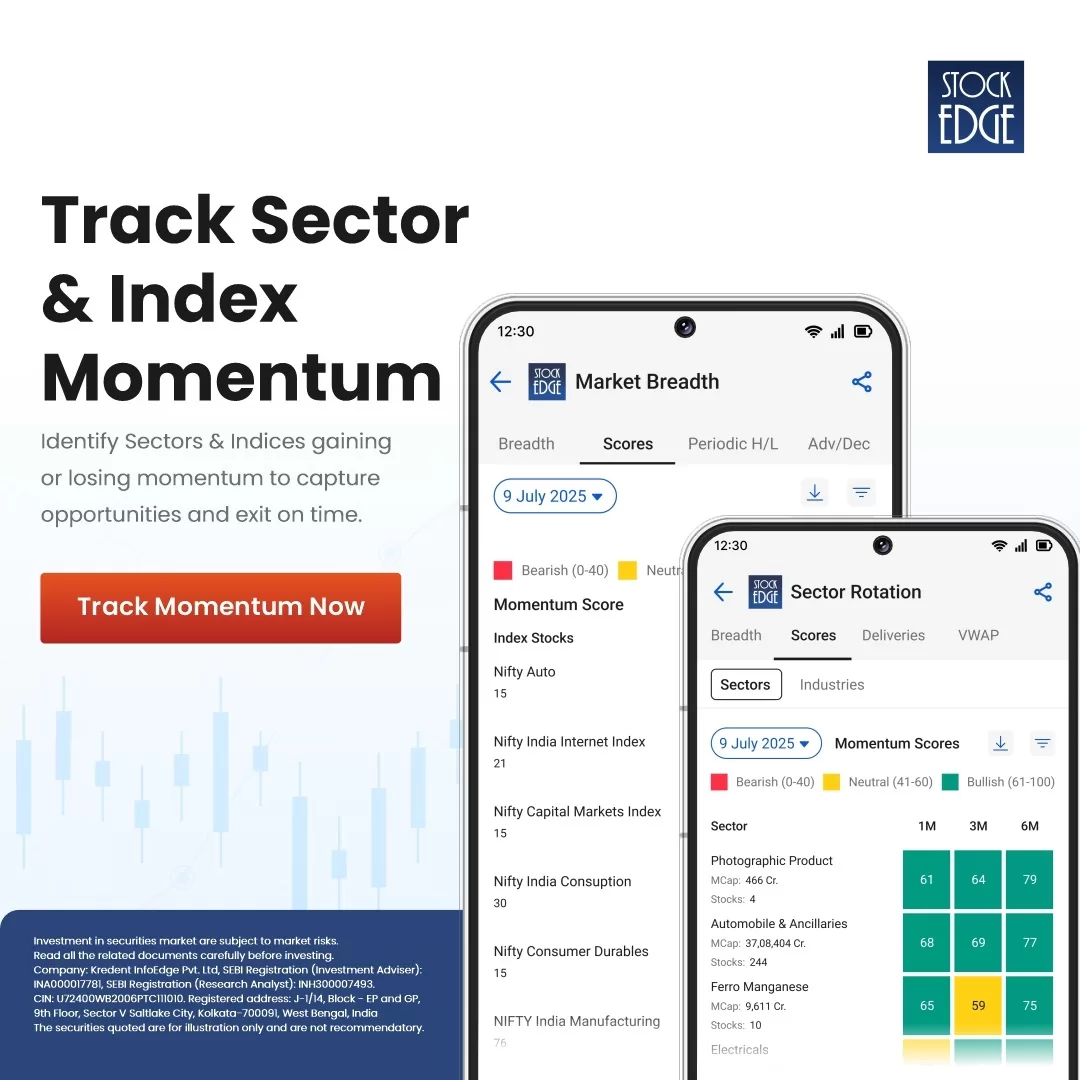Table of Contents
Imagine a stock market before the NSE came into existence!
Trading floors used to bustle not with electronic screens but with the shouts and hand signals of the brokers to make deals.
Transactions used to take place manually and recorded on paper. The settlements were done over the week.
Share certificates used to go missing, and investors used to wonder whether they had actually bought the share or not.
Then, in 1992, a revolutionary idea took place.
What if India’s stock exchange had cutting-edge technology- an electronic-based trading screen?
Earlier, the stock market access was limited to only those brokers who could reach the stock exchanges physically. However, with an electronic trading system, the whole nation could trade on the NSE.
So, at the request of the Government of India, The Pherwani Committee was established in 1992 to examine the setting up of a modern stock exchange in India.
This led to the establishment of the National Stock Exchange (NSE).
As we celebrate NSE’s 30th Anniversary, let us look back on how NSE has reshaped the Indian Stock Market from electronic trading to 9 crore unique registered investors!
Table of Contents
Why NSE Was Set Up?
In the Early 90s, Trading in major stock exchanges was done manually.
Stock prices were often manipulated, creating unfair advantages for some traders over others. Thus, it needed to be more fully transparent.
The stock trading was conducted on physical floors, and brokers manually made deals.
Settlements took weeks, and paperwork delays and lost certificates were common. This impacted investor confidence.
The establishment of the NSE) in 1992 was, in part, a response to Harshad Mehta’s scam of 1992, which exposed serious inefficiencies in India’s financial market structure.
This scam revealed important issues in the trading system, including a lack of transparency and outdated technology.
Brokers and market participants were able to manipulate the market due to weak oversight and a lack of standardized practices.
The Harshad Mehta scandal, which involved the misuse of funds in the banking sector to inflate stock prices artificially, highlighted the requirement for a well-regulated and technologically advanced exchange.
The Indian government and the Securities and Exchange Board of India (SEBI) saw this as an opportunity to redesign the stock market infrastructure.
The Pherwani Committee, chaired by Manohar J. Pherwani, was formed in 1991 to address these limitations of the existing stock exchange system.
It introduced screen-based electronic trading, removing the need for physical trading floors and allowing for real-time, transparent trades.
The Founding Team
The Pherwani Committee was to act as the founding team of the National Stock Exchange (NSE) –
- R H Patil: Deputed by IDBI in 1992
- SS Nadkarni: Deputed by IDBI in 1992
- Ashishkumar Chauhan: A member of the founding team who worked at the NSE from 1992 to 2000. He is currently the MD & CEO of the NSE.
- Ravi Narain, Raghavan Puthran, K Kumar, Chitra Sankaran: Members of the team who prepared the NSE’s blueprint
Significant Milestones in the NSE Journey
The NSE was incorporated in 1992 and was recognized by the Securities and Exchange Board of India (SEBI) in 1993.
It started as a wholesale debt market. Over the years, NSE has grown substantially and become one of the leading stock exchanges in the world!
Throughout its 30-year journey, NSE has continuously been putting efforts into achieving major milestones in the global financial market landscape.
Let us go over about NSE India history and significant milestones that has been achieved till now-
1992 – The year of the establishment of the NSE to bring transparency and efficiency to the Indian securities market.
1993 – 1994 – The equity and wholesale debt market segments commenced electronic-based trading.
1996 – 1998 – Established NSE Indices Limited as a joint venture with CRISIL Limited to operate an indices business.
2000- 2001 – Index options based on the NIFTY 50 index, single stock futures and options on listed securities.
2001 – 2002 – Launched ETF listings
2004 – 2005 – Launched NIFTY Bank index derivatives
2007 – 2008 – NSE became the first exchange in India to offer trading in Currency Future, Introduced the Securities Lending and Borrowing Scheme (SLBS) and also launched the NOW platform for web-based trading.
2008 – 2009-NSE launched Mutual Fund Service System (MFSS)
2009 – 2010- NSE launched the NOW platform for mobile devices and trading in currency options
2010 – 2011- NSE Commenced trading in index futures and options on global indices, S&P 500 and Dow Jones Industrial Average
2011 – 2012- NSE Commenced trading in index futures and options contracts on the FTSE 100 index and also the SME-specific EMERGE platform for the listing and trading of securities of SMEs
2013 – 2014- NSE launched the NMF-II platform for mutual funds, the NBF II segment for interest rate futures, trading on India VIX index futures, trading on NIFTY 50 (then known as CNX NIFTY) on the Osaka Exchange.
2015 – 2016-NSE launched NIFTY 50 index futures trading on TAIFEX, the platform for sovereign gold bond issuance, an electronic book-building platform for the private placement of debt securities.
2016 – 2017- NSE promoted NSE IFSC, the International Stock Exchange in India’s first IFSC SEZ at GIFT City Gandhinagar
2018 – 2019- Launched Commodity Derivatives segment, go Bid Mobile app for government securities and Tri-Party Repo of Corporate Debt Securities., Weekly option on NIFTY 50, E-voting for corporates, NSE derivatives access was extended to US clients, signed post-trade Technology and Strategic Partnership Agreement with Nasdaq and also MoU with London Stock Exchange Group
2019 – 2020- NSE launches new brand identity for NIFTY Indices, Proposed NSE IFSC-SGX Connect receives regulatory dispensations, NSE EMERGE achieves 200th SME listing milestone, NSE Commodities Segment gets recognition from CBDT, NSE opens Centre for Behavioral Science at IIMA, Launch of Interest Rate Options on Government of India bonds, NSE Indices launches Nifty BHARAT Bond Index Series, NSE declared world’s largest derivatives exchange 2019 by WFE, NSE launches Request for Quote (RFQ) Platform in Debt Securities.
2021- 2022– NSE launches cloud-based research facility NSE Data Room (NDR), Nifty Midcap Select Index, trading of weekly futures on US Dollar – Indian Rupees currency pair, NSE registered investor base surpasses 5 crore unique investors, Nifty India Digital Index and also NSE IFSC-SGX Connect Inaugurated by Prime Minister of India – Shri Narendra Modi.
2022- 2023- The World’s Largest Derivative Exchange in terms of contracts traded and also celebrated 22 years of partnership between NSE and SGX for NIFTY50
2023- 2024- World’s Largest Derivative Exchange in terms of contracts traded, Unveiling of NSE IX and Gift Nifty Logo at Gift City, Launch of Gift Nifty Trading at NSE IX, Gifty City, First listing on NSE Social Stock Exchange, Nifty50 touches 20000 on Sept 11, 2023, 21000 on Dec 8, 2023 and 25000 on Aug 1, 2024.
NSE Indices
The NSE has developed a wide range of indices for measuring the performance of the stock market or specific sectors.
NSE has launched indices to represent various segments of the market, such as large-cap, mid-cap, and small-cap stocks or specific sectors like IT, pharmaceuticals, etc., which help investors track these sectors.
Also, Investors can use these indices to assess the performance of their investments relative to the broader market.
These Indices are as follows-
Nifty 50: The main index of NSE representing the 50 largest and most liquid stocks across sectors. This Index serves as a benchmark for the overall Indian market.
Nifty Next 50: This index covers the 51st to 100th largest stocks by market capitalization, mainly focusing on large-cap stocks that may move into the Nifty 50 Index.
Nifty 500: This index comprises the top 500 companies listed on the NSE, representing around 96% of total market capitalization.
Nifty Midcap 150 and Nifty Smallcap 250: This index mainly focuses on mid-cap and small-cap stocks, respectively. This index is a deal for investors who want to diversify across smaller companies with growth potential.
Nifty Bank: This index tracks the performance of the 12 most liquid and large banking stocks.
Nifty IT: This Index represents the top IT sector companies and is popular among those who want to focus on India’s tech industry.
Nifty FMCG, Nifty Pharma, Nifty Auto: These are sectoral indices representing the performance of industries such as fast-moving consumer goods, pharmaceuticals, and the automobile industry.
Nifty Financial Services: This Index represents the financial services companies, including banks, NBFCs, and insurance providers.
Nifty Infra and Nifty Energy: These indices mainly focus on infrastructure and energy sectors as well as capital-intensive industries.
Nifty 100 ESG: This Index comprises companies that focus on Environmental, Social, and Governance (ESG) issues.
Nifty CPSE: This index tracks the performance of major Central Public Sector Enterprises, providing exposure to government-owned companies.
Major Products Introduced by NSE
The NSE has introduced several innovative trading products in the global stock market landscape.
Here are some of the firsts by NSE:
Electronic Trading Platform (1994): NSE introduced a fully automated electronic trading platform, which became the first in India and one of the early adopters globally.
Index Futures: NSE was one of the first markets to introduce index futures with the Nifty 50 index in June 2000. This allowed for hedging against index price movements and offered investors new trading strategies.
Currency Derivatives: NSE was among the first exchanges globally to offer exchange-traded currency derivatives in 2008, which allowed Indian investors to hedge against currency risk.
Interest Rate Futures (IRF): NSE was the first in the global market to launch exchange-traded interest rate futures. This product allows investors to hedge and speculate based on anticipated changes in interest rates.
SLB Mechanism (2008): NSE introduced the Securities Lending and Borrowing (SLB) mechanism, becoming one of the first globally to formalize securities lending.
Volatility Index Futures: NSE introduced a volatility index, the India VIX, and offered futures on this index.
Weekly Options: NSE led innovation in derivatives by launching weekly options on the Nifty 50 index. These short-term options allow investors flexibility in trading and hedging strategies.
Other than the above products discussed, NSE offers various investment and trading products in different segments, such as –
- Capital market for the listing of IPOs and trading of equities
- Fixed income securities
- The derivatives market.
In the equity segment, Equity and equity-linked products are available for such as stocks, IDRs, Exchange Traded Funds and closed-ended mutual fund schemes, as well as a segment devoted to the growth of the SME’s listed on EMERGE.
Under the Derivatives segment, NSE offers derivative contracts on Equity, Indices, Currency, Interest Rates and Commodities.
NSE’s Growth over the Years
Let us take a look at the growth of the National Stock Exchange (NSE) over the years –
1. Market Capitalization
NSE India market capitalization has grown exponentially since its establishment in 1994. This also indicates the growth of the Indian economy.
As of 2024, NSE India’s market capitalization is among the highest globally. As of September 27, 2024, the market cap of the capital market is as below-
2. Number of Listed Companies
In its early years, NSE’s main focus was to bring quality companies into its fold which has led to an increase in the number of listed companies.
NSE India listed companies now exceed 2,000, spanning diverse sectors, including large-cap, mid-cap, and small-cap categories.
3. Retail and Institutional Investor Participation
Both domestic and foreign investor participants have grown significantly because of NSE’s reliable infrastructure.
Foreign institutional investors’ (FIIs) participation in the Nifty 50 has been growing over the years-
NSE India FII DII data
4. Growth in Derivatives Volume
NSE is one of the world’s largest exchanges in terms of derivatives trading volume, especially in equity derivatives.
The derivatives segment has been attracting algorithmic traders due to the efficiency of its trading platform.
Role In Reshaping the Way India Invests
NSE has played an important role in spreading financial literacy by offering various innovative products and educational programs to bring first-time investors into the market.
NSE’s investor awareness initiatives, partnerships with educational institutions, and online courses have empowered more people to participate confidently in the market.
NSE’s technology products, such as algorithmic trading and real-time data, have attracted tech-savvy investors, including institutional and global investors.
Conclusion
As we celebrate NSE’s 30-year journey, it’s clear that NSE has not only successfully implemented transparency and efficiency in Indian stock trading but has also set a global benchmark for its innovation. From introducing electronic trading to innovative financial products for retail investors, NSE is among the world’s leading exchanges. NSE continues to spread financial literacy and empowerment in India, which will help shape the future of investing in India and globally.











